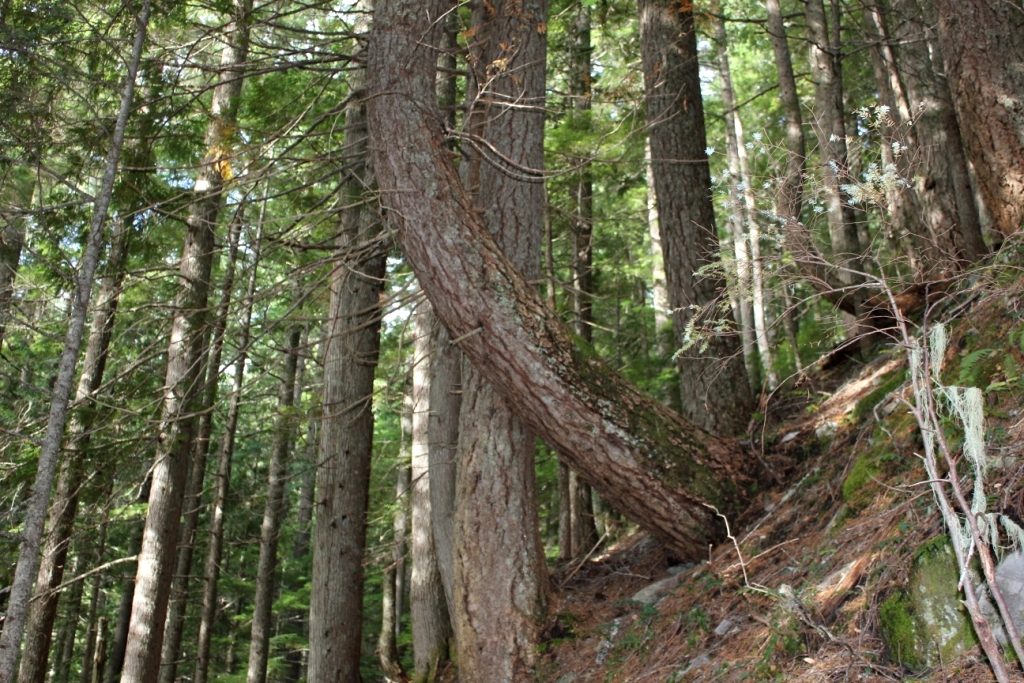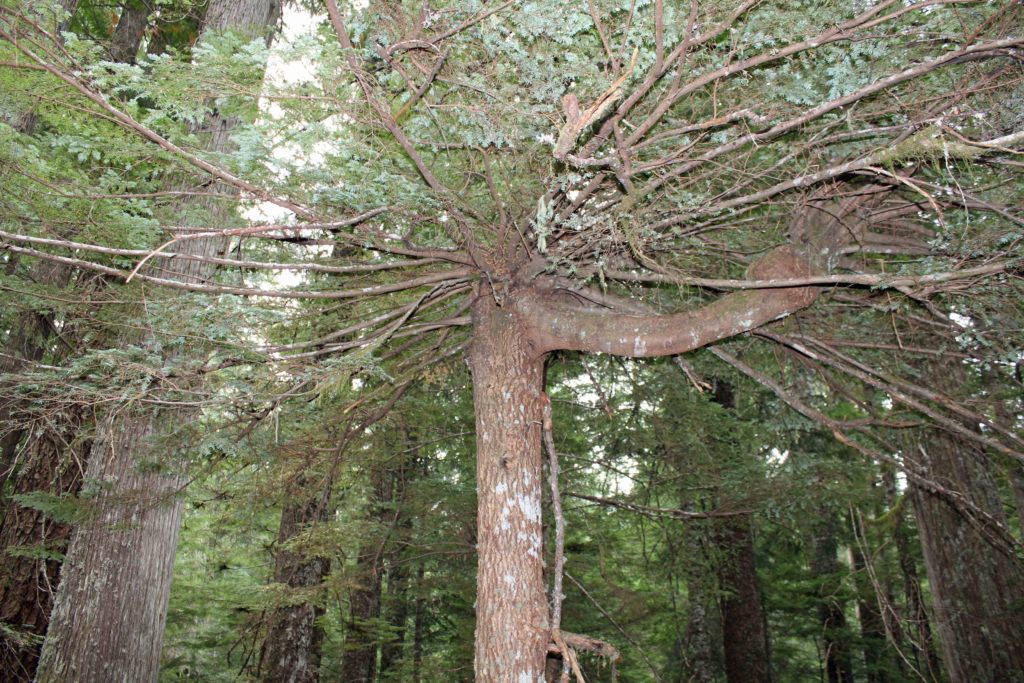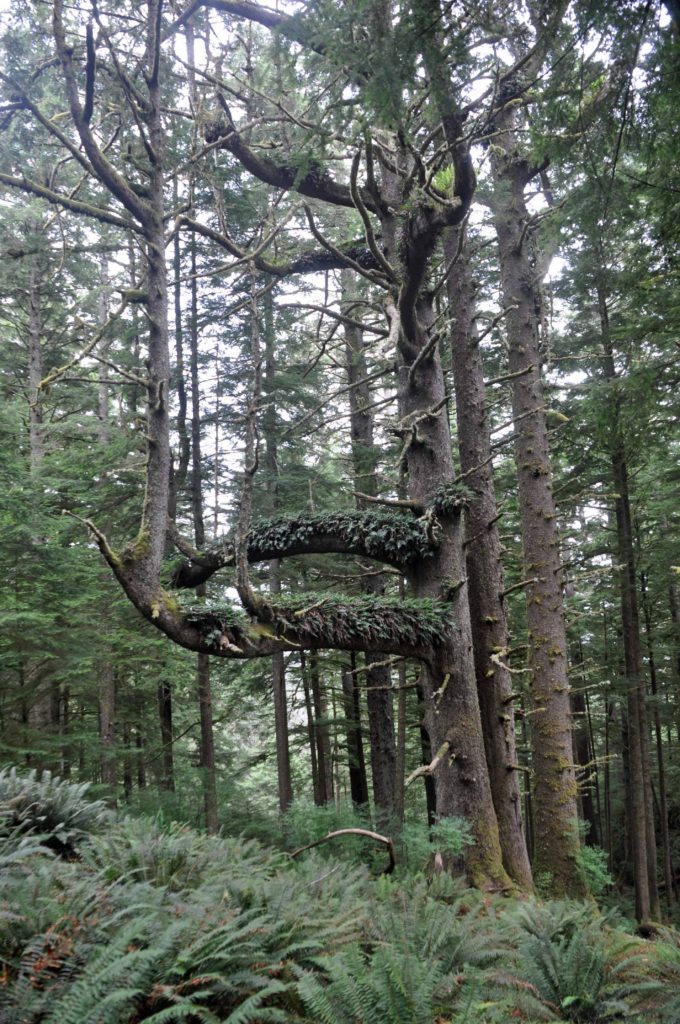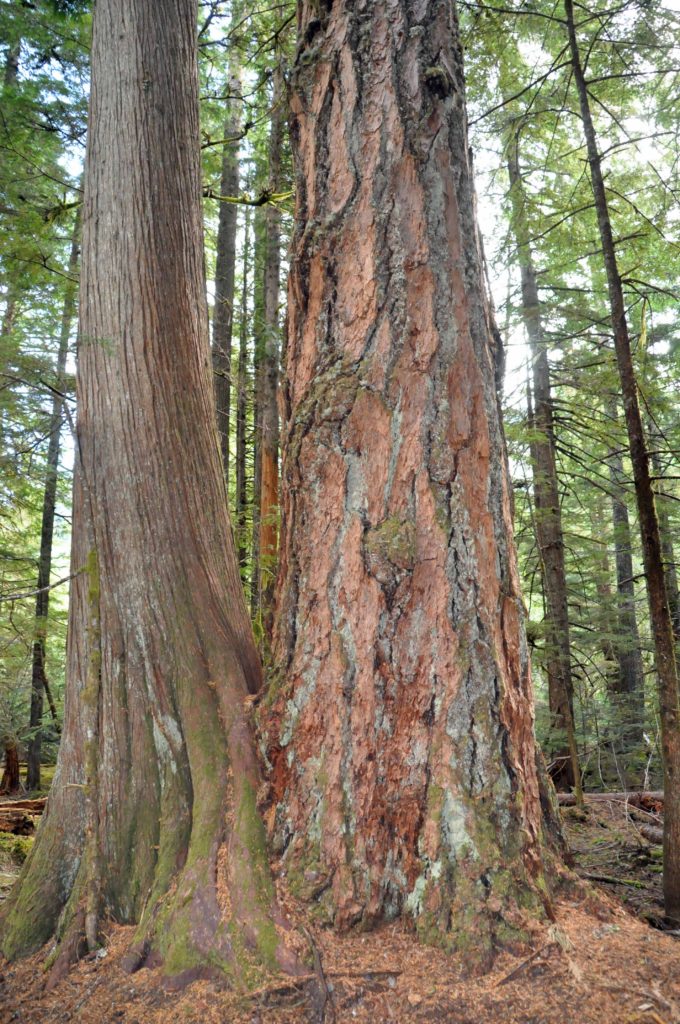Why Do Trees Do What They Do?
A few examples of odd tree shapes. Some trees bend out over a hiking trail while others prefer to stay straight. An extreme example of bending is found on the Wonderland Trail at Mount Rainier National Park. No idea what caused this. Then we have this example of branch “explosion.” Was it a result of the top of the tree being trimmed? If so, what provoked huge right angle limbs to jut out of this tree in the park near Cannon Beach Oregon? And talk about long term relationships – check out this Douglas-fir/Cedar couple. And here’s a unique example of triplets. A huge Douglas-fir split into a pair of enormous trees joined together at the trunk with an oak tree. Why?
Ever since I read the book about the secret life of trees I’ve become more and more aware of these very large and very obvious organisms. Living in the Northwest the first and most difficult thing to ignore about our trees is their size. Douglas-firs, Cedars, Hemlocks, and even our maples are huge. Growing to over 300 feet high with trunks of 10 feet in diameter or more, and life spans lasting hundreds of years, the Douglas-fir (hyphenated in scientific literature because it not actually a fir tree) is our size giant. The tallest Douglas-fir on record in the Olympic forest is 326 feet high. Not far behind is a Sitka Spruce at 305 feet and a Western Hemlock at 241 feet. That’s a lot of lumber! Astonishing to look at indeed, and knowing that the tree built itself to this gigantism by pulling molecules out of dirt adds to the astonishment. But their shape can be just as intriguing. Most of the coniferous species seem to grow with the vertical determination of a fired missile. Looking at them you’d swear you could place a carpenter’s level alongside the trunk and the bubble would be perfectly centered. Then there are some that twist and bend in bizarre angles. While most seem to prefer a solo life keeping some distance between themselves and their neighbors, some bloom like twins and triplets, and even keep company with other trees species. This is not confined only to the coniferous species, of course. I’m sure that within every tree species on earth there are examples of odd, even weird, morphological individuality. The question is why?
References:
Oregon Forest Resources Institute
Article by Arthur Lee Jacobson
<
>







Leave a Reply
You must be logged in to post a comment.